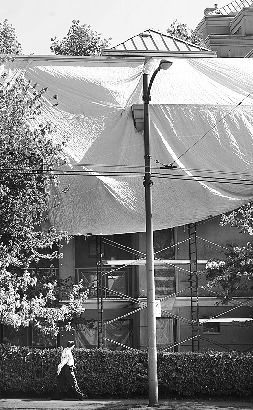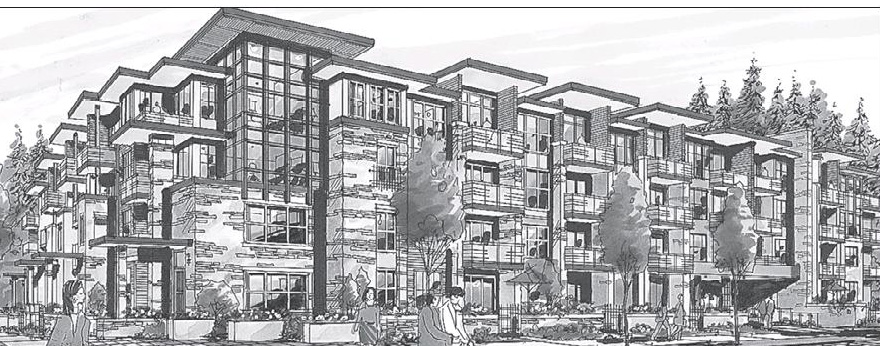Number of ‘rotten’ homes much higher than ex
William Boei, with files from Derrick Penner
Sun

Repair costs are skyrocketing because of construction cost inflation of 10 per cent last year and an expected eight per cent this year. Photograph by : Steve Bosch, Vancouver Sun
Coastal British Columbia‘s leaky condo crisis is far from over, a recent report prepared for the provincial government shows.
The report acknowledges for the first time that thousands more strata-owned apartment units suffered water damage than the government has been estimating.
By 2012, when the leaky condo era enters its fourth decade, as many as one-third of the defective units will remain unrepaired, said the report, prepared for the province’s Homeowner Protection Office (HPO) by private consultants.
At least 45 per cent and possibly as many as 68 per cent of leaky buildings have not been repaired yet, according to various scenarios explored by the consultants.
They also revealed that of the nearly 160,000 strata-owned apartment units built during the leaky condo period — considered to date from 1982 to 1999 — 45 to 55 per cent have suffered “premature building envelope failure.”
James Balderson, spokesman for the Coalition of Leaky Condo Owners, said the report helps to reveal the magnitude of the leaky condo problem, which he always thought was being underestimated.
However, Balderson says the HPO report, written by the consulting firm McClanaghan and Associates, still underestimates the number of condominium units that are likely to suffer problems with leaks.
“I’ve been saying that for years,” Balderson said in an interview. “The Homeowner Protection Office has underestimated [and] under-reported the number of leaky, rotten condos.”
He said the number of affected units will continue to be underreported because the cut-off points for drops in value and the time frame of construction the HPO uses to determine which buildings qualify for assistance mean it excludes many leaky homes.
HPO chief executive Ken Cameron and Housing Minister Rich Coleman could not be reached for comment Tuesday.
The new report said at least 72,000 strata units leaked and suffered water damage, and possibly as many as 87,500.
The HPO and the provincial government insisted for many years that no more than 65,000 strata apartments were damaged, including all the ones that had not been discovered yet.
The report said officials now realize they still don’t know “the full extent of building envelope failure.”
The consultants made no attempt to estimate the total cost of the damage, but concluded that early estimates of the repair cost per unit — $10,000 to $15,000 — were far too low.
“Based on the HPO experience, it would appear that the actual average repair costs are approximately five times or six times higher,” they said.
By last September, repair loans the HPO makes to leaky condo owners had grown to an average of $62,000 for wood-frame apartments, and $72,000 for those in concrete buildings.
The repair costs continue to escalate because of construction cost inflation, 10 per cent last year and expected to be eight per cent this year, the consultants added.
The report’s findings were based in part on the HPO’s repair loan statistics — it has been making repair loans since 1999 — and in part on B.C. Assessment Authority records of units that suffered a sudden drop in assessed value of 15 per cent or more, a likely sign of building envelope failure.
Nearly a decade ago, the HPO estimated that the 65,000 units it then said were damaged would cost $1.5 billion to repair. The consultants did not provide a new number, but based on The Sun’s extrapolations of their scenarios, it appears the complete repair cost for strata apartments alone is in the range of $3 billion to $4 billion.
The consultants’ report was presented to the HPO last December, but was not distributed to the media and not posted on the HPO’s website, although an executive summary was posted. It took persistent requests from The Vancouver Sun to obtain a full copy of the report.
It said 159,979 strata units were built during the leaky condo period. Based on a moderate estimate of 72,000 leakers, 45 per cent of those units were defective.
The higher estimate of 87,500 problem units suggests 55 per cent of strata units built during the period suffered building envelope failure.
Some 30,000 homes have already been repaired, but at least 42,000 others still require major reconstruction, the report said. In the report’s worst-case scenario, 68 per cent of leaky condos have not been repaired yet.
Concrete highrises have been slower to show water problems than wood-frame buildings, and the report said six to 10 highrises, often with 100 or more units per building, are being added to the leaky lists each year.
“A small increase in the number of buildings from this segment could have a significant impact on the HPO reconstruction program,” it said. In a background paper, the HPO said it expected “demand for assistance will likely remain high for the foreseeable future.”
The consultants’ report said the percentage of units in leaky buildings whose owners need financial help to make repairs has risen in the last three years from just under 40 per cent to nearly 49 per cent. Eight-one per cent of HPO repair loans have been for units in wood-frame buildings, and the rest for concrete.
© The Vancouver Sun 2008









